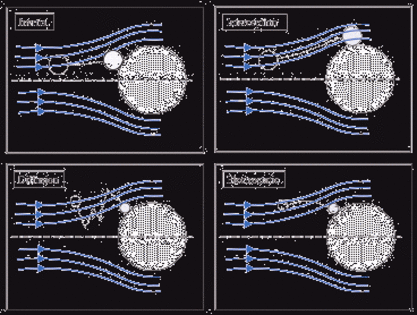
ISO 16890 regulates classification of particulate filters for room air. This new standard, in effect since late 2016, has superseded European standard EN 779 in mid-2018.

For years, industry experts have demanded an improved standard to replace EN 779. Critics of the standard call attention to its highly unrealistic test conditions and test results with limited relevance to real-world performance. ISO 16890 provides lab evaluation procedures which more realistically simulate actual operating conditions, replacing the old standard's filter classes G1-F9 by a classification system based on particulate groups PM1, PM2.5 and PM10. These same particulate categories are used by the World Health Organization in evaluation of environmental air quality.
EMW’s air filters get tested and classified according ISO 16890. We offer you a huge range of different ISO 16890 air filters.
Unlike EN 779 which specifies Filter Classes, ISO 16890 classifies according to Filter Groups, evaluating a filter's performance by its arrestance of particles from 0.3 to 10 μm in size. Filter Group PM 1 comprises particulate sizes ≤1 μm, PM 2.5 includes particulates sizes ≤2.5 μm and PM 10 covers particulate sizes ≤10 μm.
For filter experts, the key difference is clear: The old standard tests arrestance of only one particulate size (0.4 μm). The new standard determines arrestance over a spectrum of particulate sizes.
| Filter Group | Particulate Size (μm) | Classification Criterium | |
|---|---|---|---|
| *ePM = efficiency Particulate Matter | |||
| ISO ePM1 | 0.3 ≤ x ≤ 1 | Minimum efficiency ≥ 50 % | ISO ePM2,5 | 0.3 ≤ x ≤ 2,5 | Minimum efficiency ≥ 50 % | ISO ePM10 | 0.3 ≤ x ≤ 10 | Average efficiency ≥ 50 % |
| ISO Coarse | 0.3 ≤ x ≤ 10 | Average efficiency < 50 % | |
This clip shows you how a filter gets tested according ISO 16890.
An air filter qualifies for Filter Group ISO ePM1 or ISO ePM2,5 if it achieves a minimum efficiency of 50% or greater for particulate sizes ≤1 μm or ≤2.5 μm. Along with the Filter Group achieved, the complete ISO 16890 classification also includes the filter's average efficiency . Minimum efficiency is defined as the efficiency achieved following electrostatic discharge of the filter before testing. Average efficiency is calculated by averaging the filter's efficiencies in the untreated state, i.e. before discharging, and in the discharged state. More information in this regard is provided in the section below entitled "Filter Testing According to ISO 16890".
For example: if a filter achieves a minimum efficiency of 45% in the PM1 size spectrum and 56% in the PM2.5 size spectrum, it does not qualify for the ISO ePM1 Filter Group – having missed out by 5 % – but does qualify for the ISO ePM2,5 Filter Group. Assuming that the average efficiency achieved by this filter for ISO ePM2,5 particulates was 68%, this percentage is rounded down to the nearest 5% increment (i.e. rounded down to 65 %) and the filter’s ISO 16890 classification is therefore ISO ePM2,5 65%.
To be classified in Filter Group ISO ePM10 a filter must achieve an average efficiency of ePM10 ≥ 50 %. Filters with an average efficiency < 50% for this particle size range are classified in the Filter Group ISO Coarse and according their initial gravimetric arrestance.
The following table shows results of a pocket filter which got tested according to ISO 16890.
| Arrestance | Test Results | ||||
|---|---|---|---|---|---|
| Minimum Efficiency | Average Efficiency | ||||
| Criterium achieved / not achieved | |||||
| ePM1 | 45 % | 59 % | |||
| ePM2,5 | 56 % | 68 % | |||
| ePM10 | 89 % | ||||
Which ISO Filter Group classification is achieved by the filter above?
The following table shows results of a compact filter which got tested according to ISO 16890.
| Arrestance | Test Results | ||||
|---|---|---|---|---|---|
| Minimum Efficiency | Average Efficiency | ||||
| Criterium achieved / not achieved | |||||
| ePM1 | 84 % | 85 % | |||
| ePM2,5 | 88 % | 89 % | |||
| ePM10 | 96 % | ||||
Which ISO Filter Group classification is achieved by the filter above?
xAlong with the new filter-group based classification system, ISO 16890 also incorporates changes in test procedures. The new standard specifies two test phases for evaluation of air filters.
Determination of pressure
drop
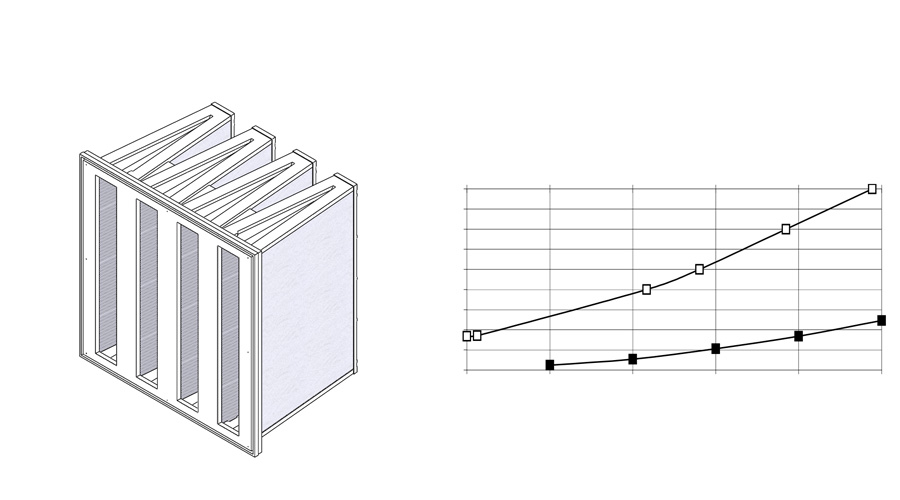
In Phase 1 of the testing, the pressure drop across
the filter is determined as a function of volumetric air throughput.
Determination of fractional
arrestance
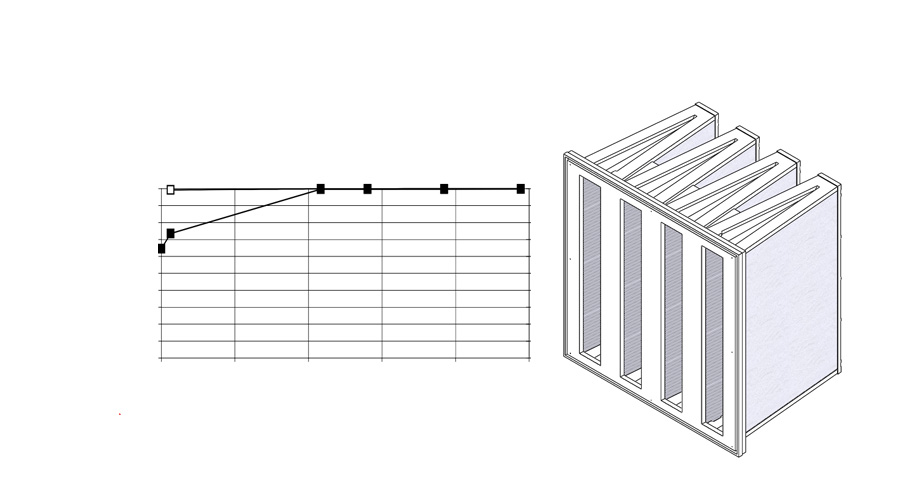
Then the
filter's fractional arrestance is determined over a particle size spectrum of 0.3
μm - 10 μm. Two different test aerosols are used in the testing: DEHS (di-ethylhexyl
sebacate) aerosol for particulate sizes up to 1 μm and, for larger particulate sizes,
KCl (potassium chloride) aerosol.
Testing of
electrostatically discharged filter
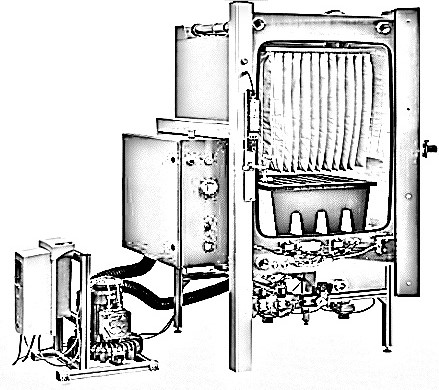
Phase 2 of the testing concentrates on the filter's performance without the distorting effects of electrostatic charge. A filter which is charged with static electricity will achieve increased arrestance – for instance in laboratory testing. In actual field service this increase is only a temporary effect which quickly disappears. For this reason, test data determined on electrostatically charged filters does not truly relate to real-world performance. Therefore, in Phase 2 the filter is electrostatically discharged in a treatment chamber before its arrestance and pressure drop are again determined under more realistic conditions.
4) Weighted evaluation of arrestance
results using theoretical particulate distributions
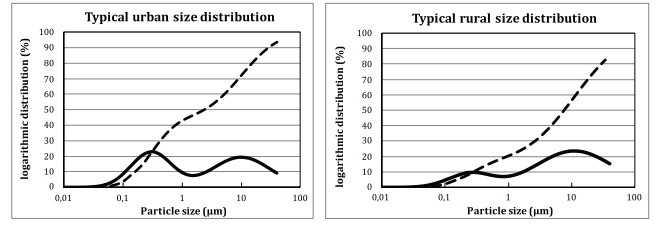
The results
of both test phases are then averaged, providing the average arrestance for
each of the fractions PM1, PM2.5 and PM10. Before the filter is classified in
an ISO Filter Group, its arrestance results are weighted using theoretical
particle size distributions for urban and rural air. The ISO Filter Group classification
is done in accordance with these weighted arrestance results.
5) Determination of dust
retention capacity
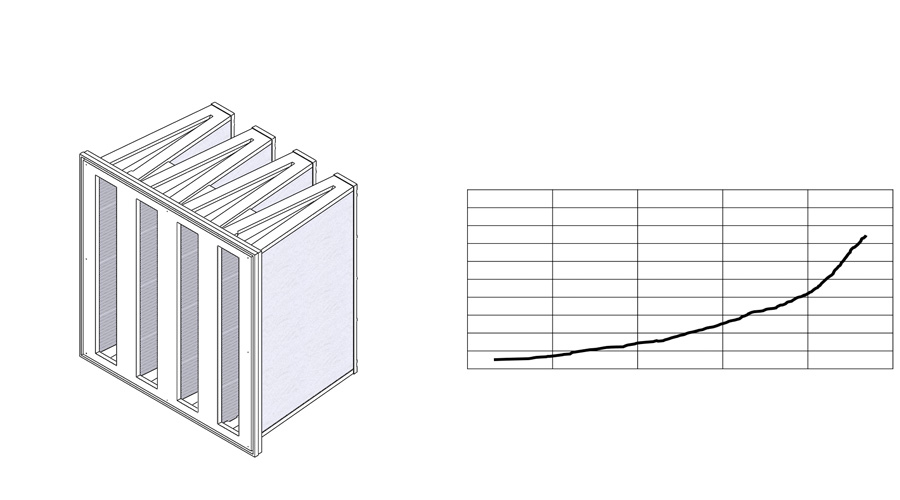
In the case
of ISO Coarse filters, testing
of dust retention
capacity
is mandatory as stipulated by ISO 16890. For all other Filter
Groups this is an optional determination. The testing particulate specified for
use in the dust retention test is Test Dust ISO Fine.
into ISO Filter Groups?
No, there isn't, we're sorry to say. The testing and evaluation procedures of ISO 16890 and EN 779 differ greatly. We therefore cannot recommend use of tables or calculations which claim to convert G1-F9 Filter Classes into ISO Filter Groups. A number of such conversion tables are available; however there are major differences between them. The following comparison shows how filter classes according EN 779 could be converted in filter groups according ISO 16890.
| EN 779:2012 | ||||
|---|---|---|---|---|
| Filter Classes |
ePM1 | ePM2,5 | ePM10 | Coarse |
| G1 | - | - | - | - |
| G2 | - | - | - | 30%-50% |
| G3 | - | - | - | 45%-65% |
| G4 | - | - | - | 60%-85% |
| M5 | 5%-35% | 10%-45% | 40%-70% | 80%-95% |
| M6 | 10%-40% | 20%-50% | 60%-80% | >90% |
| F7 | 40%-65% | 65%-75% | 80%-90% | >95% |
| F8 | 65%-90% | 75%-95% | 90%-100% | >95% |
| F9 | 80%-90% | 85%-95% | 90%-100% | >95% |
References:
- VDMA Air Filter Information (2018-06) page 6 for filter classes G1 - G4 respectively ISO Coarse
- EUROVENT 4/23:2020, page 18 / 9. Annex for filter classes M5 - F9 respectively ePM10, ePM2,5 und ePM1
| EN 779 | ISO 16890 | |
|---|---|---|
| Title | Particulate air filters for general ventilation | Air filters for general ventilation |
| Validity | up to mid-2018 | From late 2016 |
| Evaluation of arrestance | Filter Classes G1-G4: average gravimetric arrestance Filter Classes M5-F9: Only arrestance of particulates 0.4 μm in diameter |
Classification is based on arrestance of particulates in the diameter range 0.3-10 μm. This applies for all ISO Filter Groups. |
| Filter classification | Filter Classes G1-G4 M5-M6 F7-F9 |
Filter Groups ISO Coarse ISO ePM10 ISO ePM2,5 ISO ePM1 |
| Test dust | L1 (ASHRAE) | L2 (A2 / ISO Fine) |
| Important characteristics | 1) Average gravimetric arrestance 2) Average efficiency & minimum efficiency for particles 0.4 μm in diameter 3) Dust retention capacity for test particulate 4) Pressure drop as function of volumetric flow rate |
1) Initial gravimetric arrestance (compulsory only for ISO Coarse) 2) Average fractional arrestance for particulate groups PM1, PM2.5 and PM10 3) Minimum efficiency ≥50% for the tested PM group 4) Dust retention capacity for test dust (compulsory for ISO Coarse, for other filter groups optional) 5) Pressure drop as function of volumetric throughput |